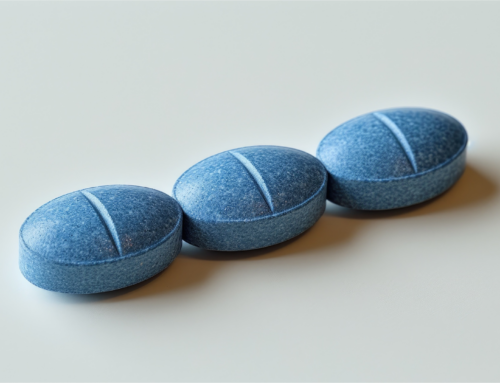What are puberty blockers, and are there any concerns with their use in children?
NHS England has reached a significant milestone by determining that puberty-suppressing hormones (PSH) will not be provided as a standard treatment option for children and adolescents experiencing gender incongruence/gender dysphoria. This decision was based on insufficient evidence supporting the safety or clinical efficacy of PSH, leading to the conclusion that it should not be routinely offered as a treatment option.
What Are Puberty Blockers?
Puberty-suppressing hormones, often referred to as puberty blockers, are synthetic hormones designed to inhibit the body’s production of natural sex hormones. By doing so, they delay the onset of puberty and the development of secondary sexual characteristics. The primary goal is to alleviate the distress associated with gender dysphoria by reducing the intensity of puberty-related anxiety. It’s important to note that this intervention is physically reversible, meaning that if a young person discontinues treatment, their body will resume its natural physical development based on their sex hormones.
What is Gender Dysphoria?
Gender dysphoria is a term used to describe the psychological distress or discomfort experienced by individuals whose gender identity differs from the sex they were assigned at birth. People with gender dysphoria may experience a strong desire to live as a gender different from the one they were assigned, and they may seek medical interventions such as hormone therapy or gender-affirming surgeries to alleviate their distress and align their physical appearance with their gender identity. Gender dysphoria is recognised as a medical condition by various mental health organisations and is often treated through counselling, hormone therapy, and other forms of gender-affirming care.
Mechanism of Action of Gonadotropin-Releasing Hormone (GnRH) Agonists
Gonadotropin-releasing hormone (GnRH) agonists act as activators of the GnRH receptor, the biological target for gonadotropin-releasing hormone (GnRH). These medications, available in both peptide and small molecule forms, are designed to replicate the action of the hypothalamic neurohormone GnRH. By interacting with the GnRH receptor, they release pituitary hormones, including follicle-stimulating hormone (FSH) and luteinising hormone (LH).
Upon initial administration, GnRH agonists trigger a “flare” response, prompting the release of LH and FSH. However, continued exposure to GnRH agonists leads to desensitisation of the pituitary gland, characterised by downregulation of GnRH receptors. This desensitisation process reduces the secretion of LH and FSH, ultimately inducing a state known as hypogonadotropic hypogonadal anovulation, often referred to as “pseudo menopause” or “medical oophorectomy.”
GnRH agonists effectively suppress gonadal testosterone production, resulting in a significant decrease in circulating testosterone levels. In men, this suppression can reach up to 95%, bringing testosterone levels into the castrate or female range.
GnRH’s mechanism of action hinges on calcium (Ca) and its intracellular receptors, calmodulin and protein kinase C. Physiologically, GnRH stimulates the release of both gonadotropins and increases the mRNA levels of the alpha and beta subunits. Furthermore, GnRH facilitates the terminal glycosylation of LH and FSH.
It seems counterintuitive that stimulating the GnRH agonist leads to a decrease in the secretion of LH and FSH. However, the physiology of this interaction becomes clear when one understands the mechanism. Exposure to pulsatile GnRH leads to an upregulation of receptors, whereas continuous administration of GnRH or GnRH agonists results in receptor loss and pituitary desensitisation. Despite significant advancements, the exact desensitisation process requires further elucidation of post-receptor events.
Drugs Used in the UK
To date, the NHS has prescribed puberty-suppressing hormones after evaluation for children and young individuals diagnosed with persistent gender dysphoria at a specific stage of pubertal development. This prescription typically accompanies psychosocial and psychological support and undergoes review by NHS England’s Multi-Professional Review Group (MPRG).
GnRH analogues such as triptorelin, leuprorelin, and goserelin are utilised in the treatment of gender dysphoria.
According to a 2020 evidence review conducted by NICE, triptorelin holds marketing authorisation in England for managing prostate cancer, endometriosis, and precocious puberty. Its use for children and adolescents with gender dysphoria falls under off-label prescribing.
Leuprorelin, on the other hand, is employed in treating prostate cancer, endometriosis, and premenopausal and perimenopausal breast cancer.
Similarly, goserelin finds application in the treatment of prostate cancer and endometriosis, as well as for endometrial thinning before intrauterine surgery.
Concerns Regarding the use of GnRH analogues for Children with Gender Dysphoria
Currently, there is a significant dearth of robust evidence regarding the effectiveness and long-term ramifications of hormone therapies utilised in addressing gender dysphoria in children.
The Cass Review initiated a thorough examination of available evidence to illuminate the clinical effectiveness, safety, and cost-effectiveness of GnRH analogues in halting puberty for children and young individuals contending with gender dysphoria.
In conducting this review, NICE meticulously scrutinised nine observational studies delving into the clinical efficacy of GnRH analogues and their impact on various outcomes, including gender dysphoria, mental well-being, and quality of life. Additionally, the analysis encompassed effects on body image, bone density, and cognitive function.
Following the review, NICE identified a scarcity of high-quality evidence, leading to low certainty surrounding the outcomes associated with GnRH analogue usage at the time of the assessment. This lack of certainty stemmed from various factors, including unreliable comparative studies on hormone treatments within this context, incomplete reporting of treatment modalities, disparities in outcome measurement approaches, potential biases, confounding variables, and chance influences on study outcomes. Furthermore, the absence of long-term follow-up data exacerbated this uncertainty.
NICE’s evaluation revealed that studies reporting on critical outcomes such as gender dysphoria and mental health indicators—such as depression, anger, and anxiety—as well as significant aspects like body image and psychosocial impact among children and adolescents with gender dysphoria yielded findings of very low certainty. Moreover, the observed changes with GnRH analogues from baseline to follow-up were minimal.
Additionally concerning is the lack of clarity regarding the potential long-term effects of puberty suppression on bone health. Equally ambiguous is the impact of GnRH analogues and puberty interruption on the developmental trajectory of the adolescent brain, and whether any observed effects are entirely reversible remains uncertain.
References:
Davy, Z. and Toze, M., 2018. What is gender dysphoria? A critical systematic narrative review. Transgender health, 3(1), pp.159-169.
Horton, C., 2024. The Cass Review: Cis-supremacy in the UK’s approach to healthcare for trans children. International Journal of Transgender Health, pp.1-25.
Ortmann, O., Weiss, J.M. and Diedrich, K., 2002. Gonadotrophin-releasing hormone (GnRH) and GnRH agonists: mechanisms of action. Reproductive biomedicine online, 5, pp.1-7.

Written by Mr. Shazlee Ashan
BSc Pharmacy, MSc Endocrinology, PgDip Infectious Diseases, Ipresc




